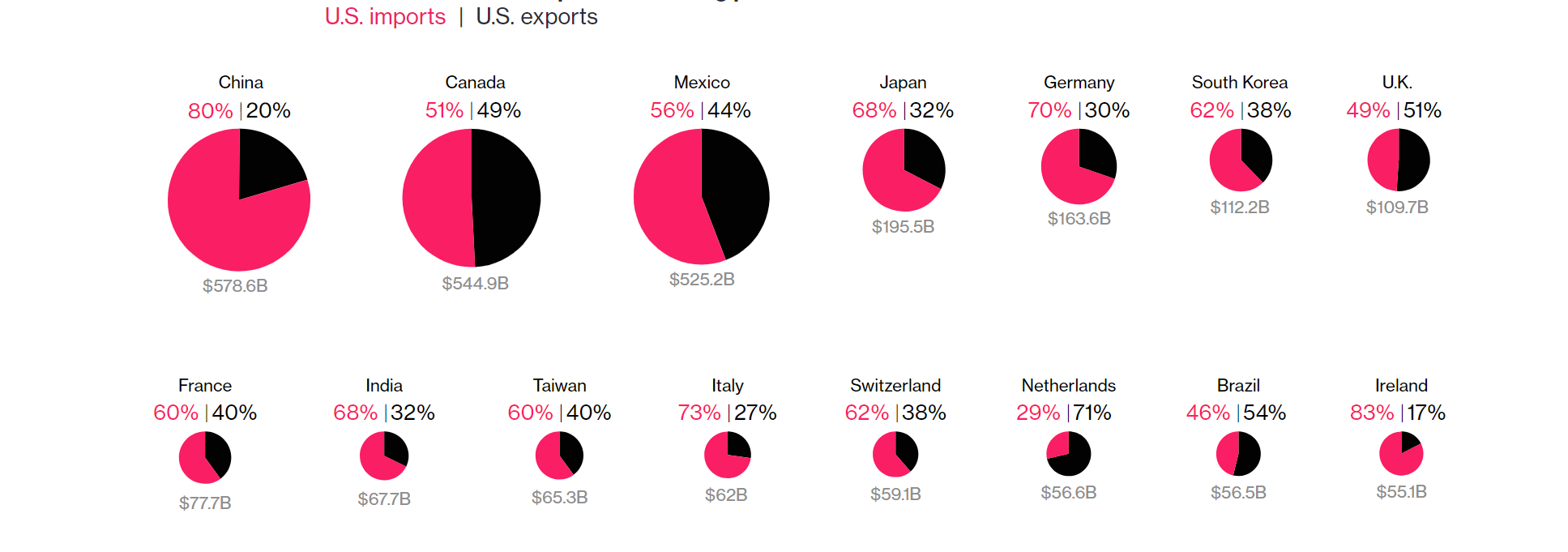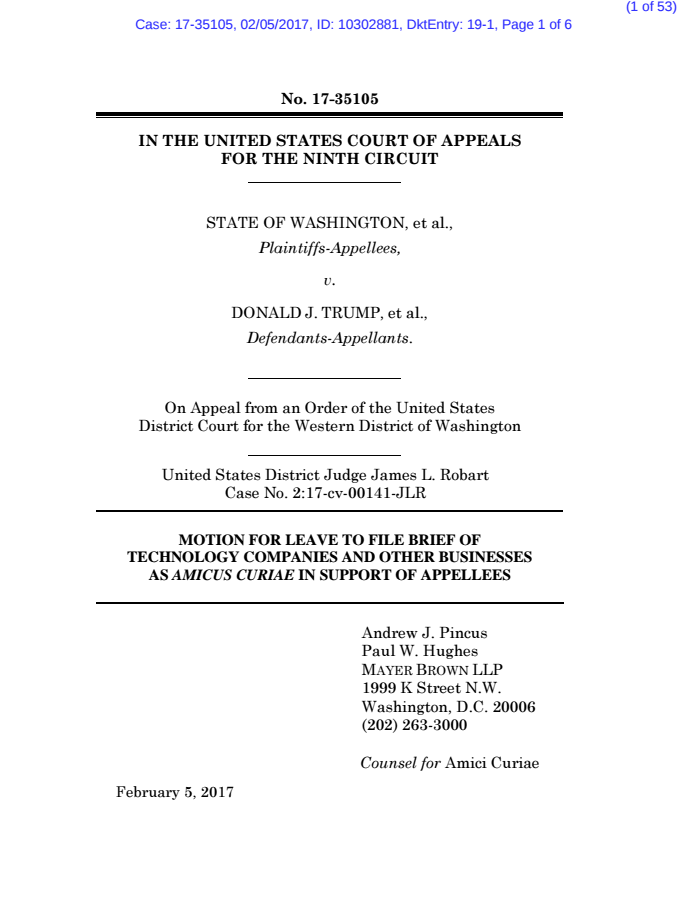“Trade deficit is an economic measure of international trade in which a country’s imports exceeds its exports. A trade deficit represents an outflow of domestic currency to foreign markets.”
-Investopedia

https://www.bloomberg.com/graphics/2017-mexico-trade-deficit/
The Bloomberg article “Trump Hates Trade Deficits, But Which Ones Really Matter?” written by Thomas Black and Dave Merrill discusses the United States of America’s various trade deficits. It suggests that renegotiating the North American Free Trade Agreement (NAFTA), an agreement among North America that allows for free trade within the countries, should not be on President Trump’s agenda due to more pressing and impactful trade deficits with other countries.
China is the United States’ top trading partner, and the two nations traded a total of $578.6 billion USD in 2016. The trade deficit, which is 60 points (80% for China to 20% for the USA), is the largest of all the United States’ trade deficits. Due to the large sum of total trades, that means the United States of America imported $347 billion USD more from China than they exported to them.
Upon my own further analysis, the total trade deficit from the two other NAFTA countries, Mexico and Canada, combined was found to be around 4.7 times less than the trade deficit with China alone (the combined trade deficit of the two North American countries is $73.9 billion USD). After assessing this information, the logical conclusion the Trump administration should reach is to focus less on renegotiating NAFTA and more on mitigating the great trade deficit with China.
The Canadian economy would be greatly affected by a renegotiation of the North American Free Trade Agreement and it is therefore important to make the case for its relatively smaller impact on the US economy and understand whether the Trump’s insistence on renegotiating it is indeed justified. After comparing numbers, it is easy to see that the United States’ biggest worry concerning trade should be its trade with China, as comparatively, the trade deficits with Mexico and Canada are quite small.

https://www.bloomberg.com/graphics/2017-mexico-trade-deficit/
Although the USA is not a corporation, I believe Stakeholder Theory can still be in some ways applied to this (this is not the first time Stakeholder Theory has been applied as such (Neaves, 2002)). As the President of the United States, Trump has a duty to many groups. His decisions, which sometimes appear to be biased and ignorant of hard facts, has a vast impact on many people. He must put the well-being of his citizens, among others, over those of his own interests.
Word Count: 409
Bibliography:
Amadeo, K. (n.d.). What Are the Causes and Effects of a Trade Deficit? Retrieved September 25, 2017, from https://www.thebalance.com/trade-deficit-definition-causes-effects-role-in-bop-3305898
Black, T., & Merrill, D. (2017, February 16). Trump Hates Trade Deficits, But Which Ones Really Matter? Retrieved September 25, 2017, from https://www.bloomberg.com/graphics/2017-mexico-trade-deficit/
Foreign Affairs and International Trade Canada, & N. (2008, April 01). North American Free Trade Agreement. Retrieved September 25, 2017, from http://www.naftanow.org/
Momoh, O. (2017, September 07). Trade Deficit. Retrieved September 25, 2017, from http://www.investopedia.com/terms/t/trade_deficit.asp#ixzz4tkPLhyLv
Neaves, Guy (2002). “The Stakeholder Perspective”. In Teichler, Ulrich; Enders, J.; Fulton, Oliver. Higher Education in a Globalising World. p. 33. ISBN 1402008643.
What is stakeholder theory? definition and meaning. (n.d.). Retrieved September 25, 2017, from http://www.businessdictionary.com/definition/stakeholder-theory.html


